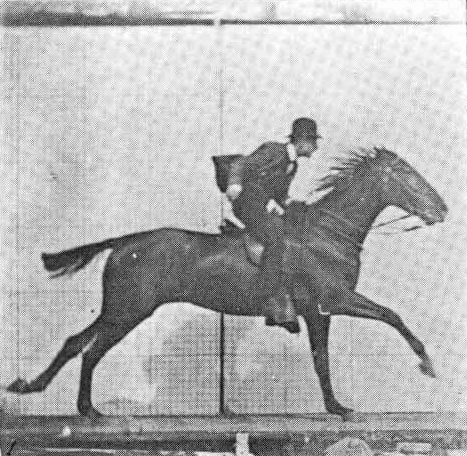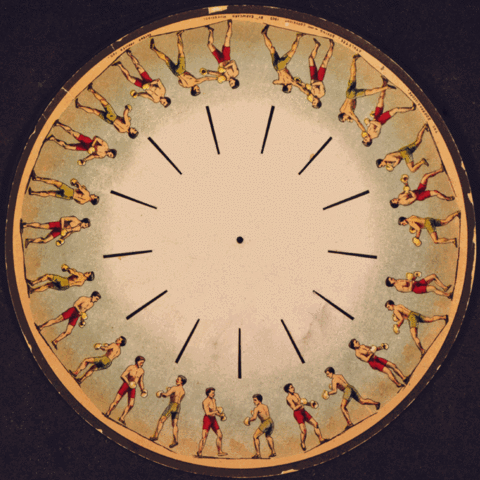
When a horse trots, do all four of its hooves ever leave the ground at once? At one time, we not only had no answer to that question, we had no way of finding out. But in 1872, when the matter piqued the curiosity of Leland Stanford, tycoon, former governor of California, co-founder of Stanford University, and race-horse owner, it did so at just the right time. Having made a bet on the answer, Stanford called on an English photographer named Eadweard Muybridge, known for his work in such then-cutting-edge subfields as time-lapse and stereography, and tasked him with figuring it out. Using a series of cameras activated by trip wires as the horse trotted past, Muybridge proved that all four of its hooves do indeed leave the ground, winning Stanford the wager.

But that only began his groundbreaking work in motion photography, which made it so, in the words of the Library of Congress, “viewers of the late 19th century were able to see in a sequence of photos every step taken by a horse at full gallop, the sleek movements of a cat running and each flap of the wings of a bird in flight.”

He later developed what he called the Zoopraxiscope: “One inserted a disc with images around the edge into the device, which rotated and projected the images onto a screen. The discs were usually painted glass based on Muybridge’s photographs. The effect was to give the audience an impression of movement, bringing Muybridge’s work to life.” Imagine how that would have looked to someone who’d never seen — who’d never even imagined — organic-looking movement in manmade art?

You can see 93 of Muybridge’s moving photographs, zoopraxiscope discs, and other experiments in decoding the movement of living things and granting it to images at Wikimedia Commons. “Although Eadweard Muybridge thought of himself primarily as an artist, he encouraged the aura of scientific investigation that surrounded his project,” says the site of Freeze Frame, the National Museum of American History’s exhibition of his work. It makes sense that Muybridge, who qualified as an eccentric as well as a genius, would occupy the space between art and science, inquiry and creation, reality and illusion — and it makes sense to view the fruits of his labors as animated GIFs, their technological descendants that also looked pretty impressive, so I recall, when first we laid eyes on them.
Related Content:
Was a 32,000-Year-Old Cave Painting the Earliest Form of Cinema?
The History of the Movie Camera in Four Minutes: From the Lumiere Brothers to Google Glass
Watch the Films of the Lumière Brothers & the Birth of Cinema (1895)
One Trillion Frames Per Second: The Science of Capturing Light in Motion
Thomas Edison’s Boxing Cats (1894), or Where the LOLCats All Began
Based in Seoul, Colin Marshall writes and broadcasts on cities and culture. He’s at work on a book about Los Angeles, A Los Angeles Primer, the video series The City in Cinema, the crowdfunded journalism project Where Is the City of the Future?, and the Los Angeles Review of Books’ Korea Blog. Follow him on Twitter at @colinmarshall or on Facebook.


Top image: it’s a galloping horse, not a trotting one. A trot is slower than a gallop, and you can see how many hooves are on the ground at once with the naked eye. This is much harder to see in the fast gallop, hence Muybridge’s experiment.